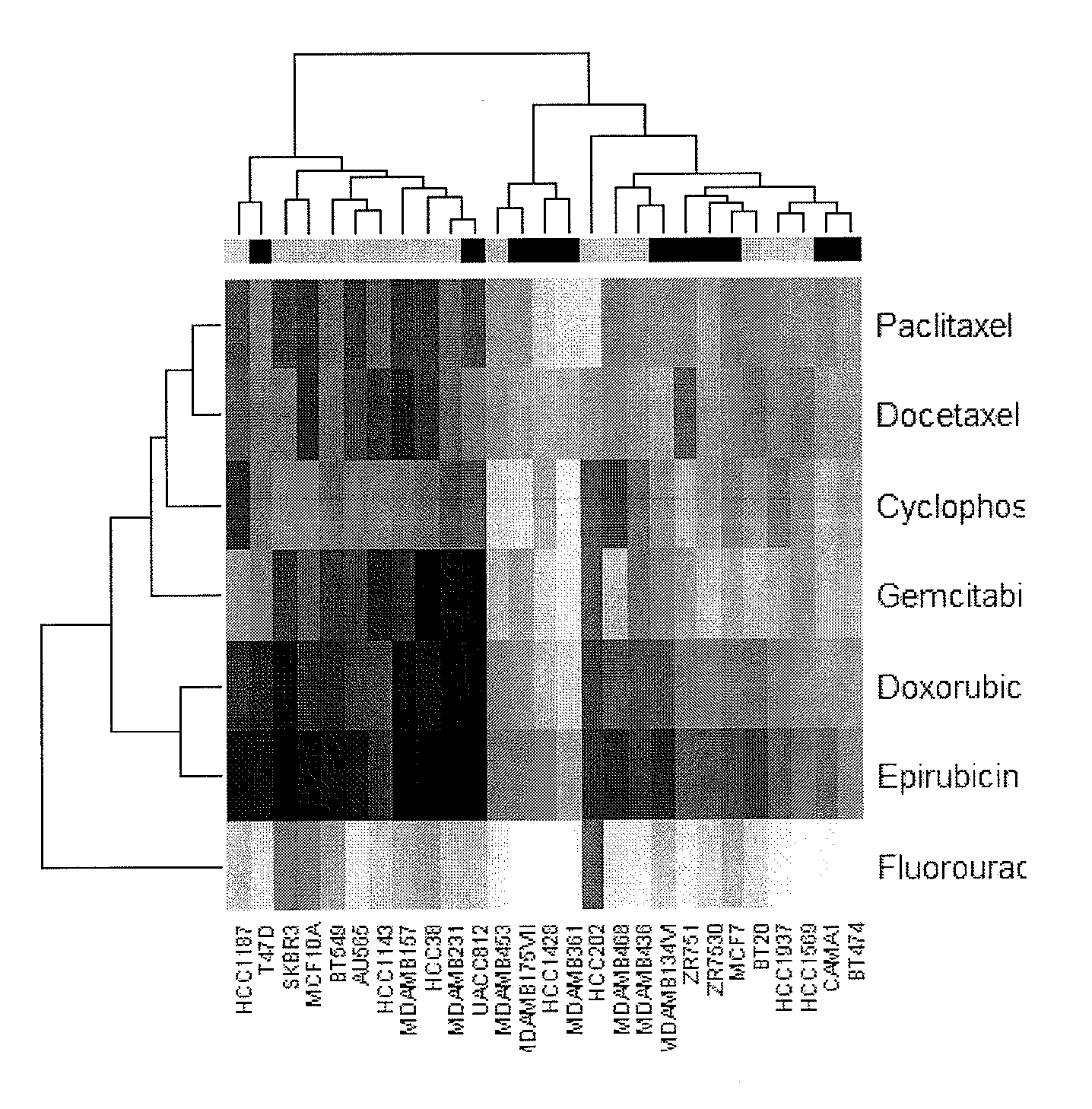Multi drug response markers for breast cancer cells
a breast cancer cell and multi-drug technology, applied in the field of multi-drug response markers for breast cancer cells, can solve the problems of multi-drug resistance in the effective treatment of breast cancer with chemotherapeutic agents, less than 50% success rate, and less effective treatment of recurrent disease by chemotherapeutic agents, and achieve good proxy for drug response
- Summary
- Abstract
- Description
- Claims
- Application Information
AI Technical Summary
Benefits of technology
Problems solved by technology
Method used
Image
Examples
examples
Materials and Methods
[0050]In this study, 27 breast cancer cell lines (as shown in FIG. 1) were obtained from American Type Culture Collection, Manassas, Va., USA. Cells were cultured in RPMI 1640 (Mediatech, Herndon, Va., USA). FBS was purchased from HyClone (Logan, Utah, USA). The following chemotherapeutic agents were used in the current study and prepared as recommended by the manufacturer in the growth media used for cell growth: paclitaxel, docetaxel, gemcitabine, cyclophosphamide, fluorouracil, doxorubicin, and epirubicin.
[0051]The CHEMOFX assay was performed as described previously (Mi, Holmes et al. 2008). Briefly, cells were treated with chemotherapeutic agents (untreated cells were used as a control). For each chemotherapeutic agent, ten serially diluted drug concentrations were tested in triplicate. After an incubation period of 72 hours, the cells were fixed, stained, and counted. The number of cells remaining after drug treatment was used to determine survival fraction...
PUM
| Property | Measurement | Unit |
|---|---|---|
| Volume | aaaaa | aaaaa |
| Volume | aaaaa | aaaaa |
| Volume | aaaaa | aaaaa |
Abstract
Description
Claims
Application Information
 Login to View More
Login to View More - R&D
- Intellectual Property
- Life Sciences
- Materials
- Tech Scout
- Unparalleled Data Quality
- Higher Quality Content
- 60% Fewer Hallucinations
Browse by: Latest US Patents, China's latest patents, Technical Efficacy Thesaurus, Application Domain, Technology Topic, Popular Technical Reports.
© 2025 PatSnap. All rights reserved.Legal|Privacy policy|Modern Slavery Act Transparency Statement|Sitemap|About US| Contact US: help@patsnap.com



